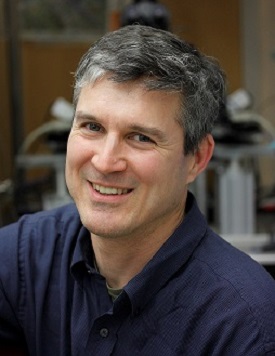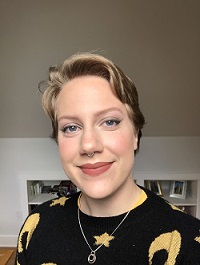Eric Schnell, M.D., Ph.D.

Eric Schnell, M.D., Ph.D.
Associate Professor
Oregon Health & Science University
3181 S.W. Sam Jackson Park Road
Portland, OR 97239
Mail Code: L459
Email: schneler@ohsu.edu
Research
I am a clinician-scientist with an active basic and translational neuroscience research program. My research goal is to understand how synapses are formed by neurons and how these neurons contribute to information processing in both healthy and diseased brains. My lab uses electrophysiology, molecular biology, immunohistochemistry and translational models of neurological disease to study neuronal circuit structure and function. I also maintain a clinical practice in anesthesiology in the VA Portland Health Care System, caring for veterans with a wide array of neurosurgical, cardiovascular, and oncologic conditions.
Our current research focuses on how synapses are formed in the brain by adult-born neurons, how these neurons contribute to neuronal circuit function, and how they contribute to recovery from neurologic injury. Newly generated neurons must be integrated into existing neuronal circuits to contribute to information processing, and alterations in this process could have profound clinical implications. Our current focus is on understanding how adult-born neurons might contribute to the pathogenesis of post-traumatic epilepsy, and we have developed techniques to analyze synaptic transmission at synapses formed by these adult-born cells and to evaluate the behavioral consequences of activity in these adult-born neurons. Our scientific expertise lies in the study of neuronal structure and synaptic function, using electrophysiology, molecular biology, translational models and immunohistochemical/anatomical imaging techniques.
Research Team
Alyssa Stayner, B.S.

Alyssa was born and raised in Vancouver, WA. and is a first generation college student. She graduated in 2020 with a B.S in Neuroscience with an emphasis in cognitive behavior from University of Montana. Alyssa stayed in Missoula to work at a private neuro discovery company as a research support specialist, aiding some of their epilepsy mouse model research. She returned to the PNW to be closer to family. Her hobbies include adventuring, crafting, and reading. Weather permitting she and her husband along with their Australian shepherd Bailey, are on a trail somewhere. In warmer weather they enjoy hiking and backpacking. When it snows they enjoy snowshoeing or cross country skiing.
Natasha Warikoo, M.D., Ph.D.

Natasha is an MD/PhD student who joined the Schnell lab in 2020. She grew up in Cincinnati, Ohio and went to college at Washington University in Saint Louis, where she pursued a degree in philosophy, neuroscience and psychology. After graduating, she started working in a lab studying anti-NMDA receptor encephalitis with Dr. Steven Mennerick. With wonderful friends and mentors to guide her, she discovered her love for synaptic physiology. She moved out to Oregon in 2018 to continue learning about her passions-- caring for others, and understanding a small piece of how the brain works. She is currently studying the role of endogenous opioids in modulating hippocampal circuitry. When not poking granule cells, Natasha can be found in the forest or on a mountain, flanked by her two sweet dogs, Gulab and Jamun.
Ashley Anderson, B.S.

Ashley Anderson was born in Chicago, Illinois; however, she spent most of her childhood and young adulthood in Salt Lake City, Utah. She graduated from the University of Utah Honors college in 2021 with a Bachelor of Science in psychology, and with minors in chemistry and music. She also participated in undergraduate research focusing on the temporal and spatial patterns of several neural networks. After graduation, Ashley relocated to Eugene, Oregon, where she began work as a medical records specialist and clinical support person at a local OB/GYN practice. Her hobbies include running, bouldering, hiking, biking, all other outdoor activities ending in “-ing”, amateur photography, and playing the piano/guitar.
Allison "AJ" Ellingson, M.S.

AJ is a rising second year graduate student in the NGP. She was born and raised in Boise, ID and attended the University of Idaho for her bachelors degree in electrical engineering and her masters degree in biological engineering. AJ mostly focuses on electrophysiology in the lab but outside of the lab she likes to run, hike, bike, rock climb, surf, and get outside in any aspect
Ashlynn Gallagher, B.S.

Ashlynn Gallagher is a recent graduate from Oregon State University, where she pursued a degree in Biochemistry and Biophysics with minors in Neuroscience and Chemistry. Her hobbies include hiking, backpacking, painting, and anything that involves being outside with her dogs.
Publications
Eric Schnell, M.D., Ph.D.- OHSU Expert Link
Eric Schnell, M.D., Ph.D.- Pubmed
Beeson, K. A., Beeson, R., Westbrook, G. L., and Schnell, E. (2019) α2δ-2 protein controls structure and function at the cerebellar climbing fiber synapse. bioRxiv, 10.1101/604975. [Preprint]
Hendricks, W. D., Westbrook, G. L., and Schnell, E. (2019) Early detonation by sprouted mossy fibers enables aberrant dentate network activity. Proceedings of the National Academy of Sciences, U.S.A., 116(22):10994-10999.
Villasana, L. E., Peters, A. J., McCallum, R., Liu, C., and Schnell, E. (2019) Diazepam inhibits post-traumatic neurogenesis and blocks aberrant dendritic development. Journal of Neurotrauma, 36: 2454-2467.
Peters, A. J., Villasana, L. E., and Schnell, E. (2018) Ketamine alters hippocampal cell proliferation and improves learning in mice after traumatic brain injury. Anesthesiology, 129, 278-295.
Hendricks, W. D., Chen, Y., Bensen, A.L., Westbrook, G. L., and Schnell, E. (2017) Short-term Depression of Sprouted Mossy Fiber Synapses from Adult-born Granule Cells. Journal of Neuroscience, 37(23):5722-5735 and Cover IllustrationVillasana, L. E., Kim, K. N., Westbrook, G. L., and Schnell, E. (2015) Functional integration of adult-born hippocampal neurons after traumatic brain injury. eNeuro, 2(5) e0056-15.
Schnell, E., Long, T. H., Bensen, A. L., Washburn, E. K., and Westbrook, G. L. (2014) Neuroligin-1 knockdown reduces survival of adult-generated newborn hippocampal neurons. Frontiers in Neuroscience, 8(71): 1-7.
Shipman, S. L., Schnell, E., Chen, B. S., Hirai, T., Roche, K. W. and Nicoll, R. A. (2011) Functional dependence of neuroligin on a new non-PDZ intracellular domain. Nature Neuroscience, 14(6): 718-26.
Schnell, E., Sizemore, M., Karimzadegan, S., Chen, L., Bredt, D. S., and Nicoll, R. A. (2002) Direct interactions between PSD-95 and stargazin control synaptic AMPA receptor number. Proceedings of the National Academy of Sciences, U.S.A., 99: 13902-13907.
El-Husseini, A. E., Schnell, E., Dakoji , S., Sweeney, N., Zhou, Q., Prange, O., Gauthier-Campbell, C., Aguilera-Moreno, A., Nicoll, R. A., and Bredt, D. S. (2002) Synaptic plasticity regulated by palmitate cycling on PSD-95. Cell, 108: 849-863.
Schnell, E. and Nicoll, R. A. (2001) Hippocampal synaptic transmission and plasticity are preserved in myosinVa mutant mice. Journal of Neurophysiology, 85(4): 1498-1501.
El-Husseini, A. E.*, Schnell, E.*, Chetkovich, D. M., Nicoll, R. A., and Bredt, D. S. (2000) PSD-95 involvement in maturation of excitatory synapses. Science, 290(5495): 1364-1368.